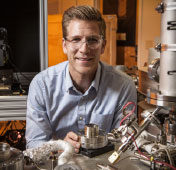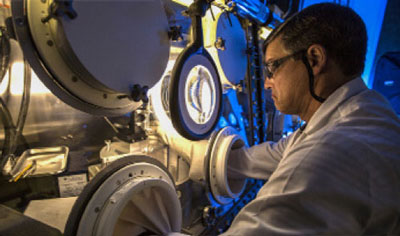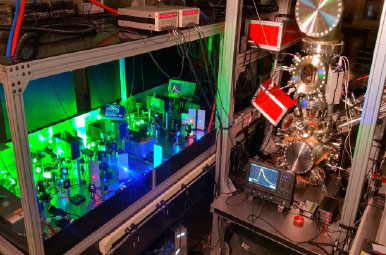Rapid Characterization Capability for Postdetonation Nuclear Forensics Supports National Security
Quickly characterizing and analyzing a nuclear detonation is crucial to effective response and consequence management.
Shifting National Security Priorities
Postdetonation nuclear forensics is the science of determining the yield, location, time, and source of a nuclear explosion using physical measurement tools and analysis techniques. The goal of nuclear forensics is to provide technical information to decision makers as quickly as possible so that they have the knowledge to attribute the explosion and manage its consequences.

Relationship to Security Mission
Livermore’s nuclear forensics research supports several of the institution’s missions. It promotes the nuclear threat reduction mission—preventing and mitigating potentially catastrophic incidents involving chemical, radiological, nuclear, or high-explosive materials—as well as the missions to reinforce the Department of Defense and other agencies with innovative science and technology. This research is also relevant to Livermore’s mission to address nonproliferation challenges through technical solutions.
Rapid Signature Assessment
A nuclear event sends out speed-of-light and speed-of-sound signals that sensors can detect. After the detonation, prompt analysis protocols developed by Livermore researchers shorten the time required to develop an analysis of the event. Sensor networks receive and record the event’s signals, and a preliminary analysis of its location, magnitude, and other parameters can be made ready quickly. The analysis is refined using additional data as they arrive.
Measuring a Detonation’s Yield
The speed-of-light signals—gamma-ray, electromagnetic pulse, and optical emissions—can reveal signatures of the device. Sound signals— infrasound data of the air blast, seismic data, ground motion data, and the craterology (the form of the crater left behind)—are clues to the height of the burst and timing. Both the speed-of-light and speed-of-sound signals are key to estimating explosive yield.
High-Performance Computing Simulates Blast Propagation

Livermore uses high-performance computing (HPC) in a number of nuclear forensics roles. For example, Livermore is developing sensor technologies and forensics software capable of measuring and interpreting varieties of data to provide prompt analyses. We also apply HPC to simulate the impacts of explosive nuclear events in urban environments. Our researchers have explored how the cityscape alters the impacts of a detonation and how regional topology and geology can affect blast propagation.
New Laboratories Help Hunt for Forensic Clues
Nuclear forensics scientists use various techniques and technologies to understand signatures and characteristics of nuclear materials, including an array of chronometric and spectroscopic tools. Resonance ionization mass spectrometry (RIMS) can identify the specific isotope a scientist wants to quantify using lasers tuned to unique resonant frequencies that ionize only the atoms of that particular element. Measurements can be obtained using just a small sample, and minimal sample preparation is needed so the results arrive quickly. The RIMS technique also does an excellent job of distinguishing between isotopes of different elements that have the same atomic weight. This feature is particularly important for identifying stages in the nuclear-fuel processing cycle. The technique has also shown promise for measurement of isotopes in fallout debris from nuclear tests.

Future Work Livermore’s researchers continue to advance postdetonation nuclear forensics in the areas of material analysis, prompt analysis, and device assessment to enhance the capability to perform rapid analysis. Our work includes developing sensor and software technologies. We are also studying how signals propagate through local geology and urban environments and are examining the effects of atmospheric conditions on signals. The nuclear forensics team is gathering relevant historic data from past nuclear tests and developing better reachback simulation capabilities to help decision makers respond to detonation events.
Predetonation Nuclear Forensics
Nuclear forensics science—or nuclear forensics—seeks to deliver technical conclusions to law enforcement and nuclear security experts regarding nuclear materials found outside regulatory control. Predetonation nuclear forensics focuses on interdicted nuclear or other radioactive materials, aiming to answer fundamental questions regarding the nature of the material and the threat it poses, its intended purpose, and its origin. In addition to providing information used in legal proceedings to prosecute the smugglers, nuclear forensics provides information necessary to identify nuclear security vulnerabilities and prevent additional material from falling outside regulatory control. Lawrence Livermore has been a leader in nuclear forensics since the early 1990s, and over the last few decades, the tools used for nuclear forensics have become increasingly important in the fight against illegal trafficking of nuclear and radiological materials.




